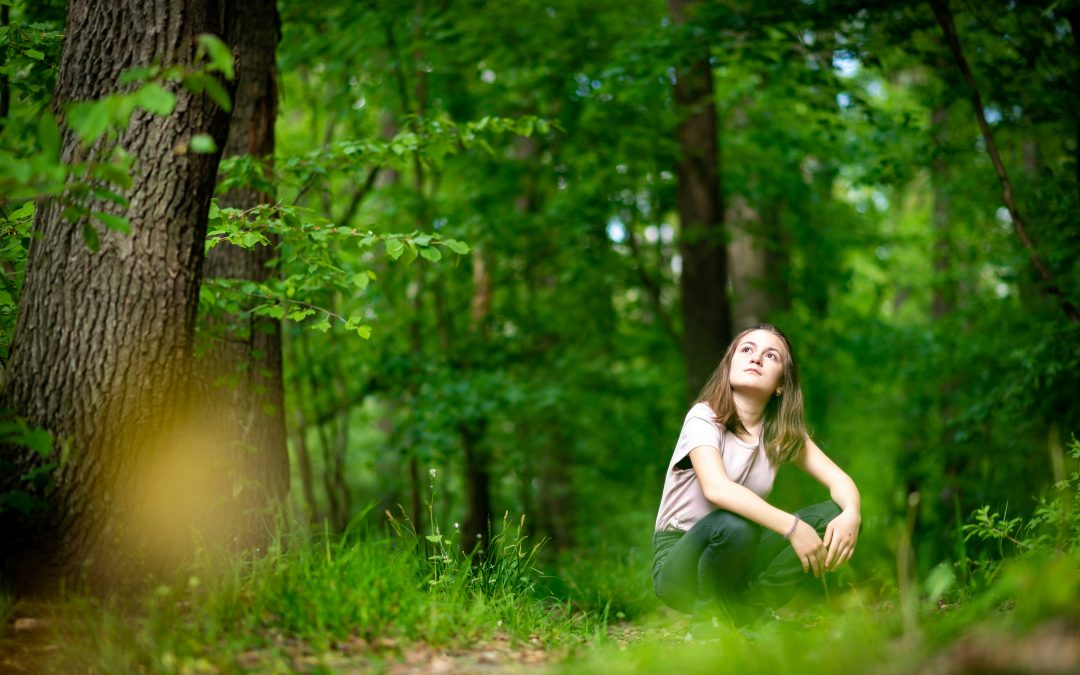Laura Emerson
Book: Log Cabin Reflections, about living off-grid in remote Alaska
Do you know the terms Forest Bathing and Forest Therapy? They refer to immersion in nature for several hours at a time, on a repeated basis. This is not a time for a vigorous jog or mowing the lawn. It is for walking or even sitting, while paying attention to the sounds, sights, scents, and perhaps tastes of the setting.
Starting in the 1980`s, Japanese doctors started encouraging, and then prescribing, shinrin-yoku – unstructured time in nature – for patients suffering from depression, stress and anxiety, including PTSD. Subsequently, doctors in Finland and Canada, did, too. If you check on line, you can find numerous websites, among many countries, about this idea.
A number of American wellness sites tout benefits as including relaxation, improved mood and attention, reduced blood pressure, stress, anxiety, and anger. Some small studies point to additional health benefits, such as increased immune function. (See links below)
If a remote location is not feasible, a large urban park can suffice, and, despite the term, I am sure that walking on beaches, meadows, and mountains all confer similar benefits.
Many years ago, my husband and I moved from Houston, Tx to live deep in an Alaskan forest, a 20 minute flight to the closest road or a 3.5 hour snowmachine trek across frozen rivers. The nature of our rural existence involves many hours outside. This time of year, while cutting firewood, I am fascinated by the eerie cracks, booms, and moans as the lake ice thickens in an otherwise silent landscape. In summer, when the lake is liquid, we kayak among swans and loons to harvest blueberries along shore.
Is it because of “forest bathing”, that our lives here are less stressful than when we lived in a city? We are calmer. We sleep soundly. Whether it is good genes or this healthy lifestyle in the woods, I do not know, but neither of us (in our mid-60s) takes any medications. We have no acute or chronic ailments.
FUN ACTIVITIES for FAMILIES, CONGREGATIONS, SCHOOLS, and COMMUNITIES
What are ways that RNA members can invite others to practice Forest Bathing techniques to enhance their physical, mental, and psychological health?
- Invite members/friends who are bird watchers, foragers, botanists, or other nature lovers to lead two hour walks for interested parties. As people learn where to go and what to watch for, they can share such outings with others.
- Does your community have some land that can be nurtured in ways to encourage people to linger outside? A fountain, benches, a trellis with climbing vines or other focal points? Members who enjoy gardening and carpentry can share their gifts and teach others, too.
- I have visited several UU congregations that have created meditation labyrinths, with gravel, stones, bark mulch, and brick. In one case, it was an Eagle Scout’s project. In another, it was designed by senior members and constructed by multiple generations of members.
- Interior spaces can extol the beauties of nature, too, to encourage members to appreciate the outdoors.
–Do your church or community buildings have TV screens mounted in the lobby and elsewhere? How lovely it would be if, instead of leaving them blank when not in use, they were tuned to soothing streams of tropical fish or animals, or lovely natural vistas? I was personally grateful for doctor and dentist offices that did so in their waiting rooms! Similarly, here in Alaska, the lobbies of some healthcare providers have gas fireplaces in their lobbies.
— What if, instead of visitors entering a silent church building on Sunday or other days, they hear the songs of birds or whales, a burbling creek, or ocean waves playing on the audio system?
–Instead of white or beige walls, does the budget allow for a full wall of photographic wallpaper depicting a realistic birch forest or ferns? Imagine how that might calm a board or staff meeting!
–Does your congregation or community benefit from artists or crafty people to host sessions in which members make wreaths or decorations with pinecones, leaves, or branches that they collect outside?
By routinely dedicating two hours to bird watch or collect pine cones or to lie in the grass and listen to insects, or build a wooden bench, or photograph trees, we demonstrate respect to the wonders of the world that surrounds us. Once inside a building full of the buzz of human activity, beautiful reminders of the world outside can be calming and inspiring.
For more information:
https://www.npr.org/2023/08/22/1195337204/a-guide-to-forest-bathing
https://www.livescience.com/forest-bathing
https://www.health.harvard.edu/blog/can-forest-therapy-enhance-health-and-well-being-2020052919948


0 Comments